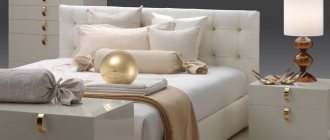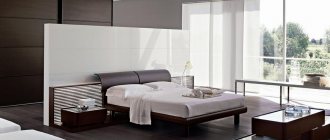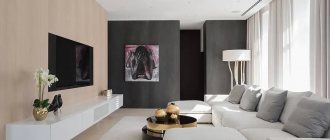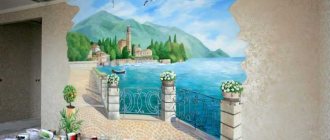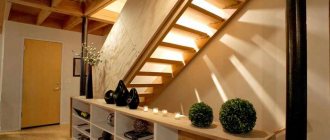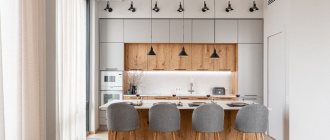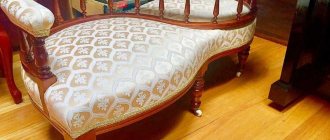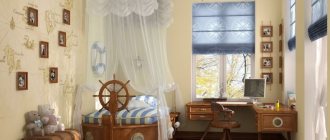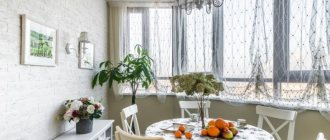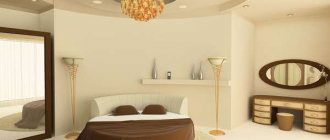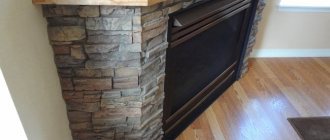Historical moments
So, let's first understand what it is, painting walls in the interior. Essentially the same as it was during the Egyptian and Sumerian eras. This approach remains relevant with one change.
If then art was intended to convey some important information to descendants, today it is ordinary wall decoration.
Painting on decorative plaster
Decorative plaster is worked in two techniques: on a dry or wet surface. Textured or textured plaster is selected. The relief surface makes it possible to create an original effect.
Some works may resemble a relief painting or an ancient fresco. This requires some experience and adherence to technology.
What does it give
Wall painting radically changes the living space. In this case, you will not need any global redevelopment.
The most advantageous zone is emphasized. You can visually change the parameters of the room or “shade out” unnecessary architectural errors.
Cityscape
A painting with a city landscape will definitely decorate the room. It can create the appearance of deep space, which is important for small rooms.
The urban landscape is perfect for the loft style. Draw skyscrapers, road signs and avenues. You can use gray tones and make red accents.
Light Scandinavian design will refresh a black and white image of a city or park.
Why not wallpaper?
By the way, many homeowners believe that there is no point in spending money on unique wall paintings in the apartment. It is enough to buy photo wallpapers with realistic pictures.
Of course, this is a good decision and, to some extent, correct. But there are only a huge number of such walls, because this decorative material is not produced in single copies.
If you look at the photo of the wall paintings, you will understand what we are trying to convey to you.
Techniques used to create wall paintings
Modern designers have virtually no restrictions in choosing techniques for creating wall paintings. Generations of experience, modern materials and available tools are at their service. The image can be applied either to a perfectly smooth surface or to a textured one - the weight depends on the goal. Most often, when creating images on walls, modern artists use:
- oil;
- acrylic;
- fluorescent paints.
A very popular tool for creating original wall paintings is the airbrush - on a perfectly flat surface you can create a drawing without traces of brush strokes or sharp transitions between color schemes. Let's look at the most popular techniques used for painting walls in modern homes.
Airbrush
This is a fairly popular technique at the moment. If we translate this expression literally, it means “I write with air.” Air indeed plays an important role in the use of an airbrush tool - an airbrush. Using compressed air, paint is sprayed onto a previously prepared surface. The images are light, literally airy, with barely noticeable color transitions.
Fresco
The oldest technique, based on painting on wet plaster, is relevant at all times. The characteristic texture of this technique is recognizable in any version. The resulting image is highly wear-resistant - it is not without reason that many examples of ancient frescoes have survived to this day. Currently, the fresco technique is used both to create examples of modern painting and to imitate ancient wall images (for this they resort to artificial aging of the surface, patina).
Painting with fluorescent paints
It’s easy to guess that the technique is based on the use of fluorescent paints that glow in the dark. A unique image can be created using various colors of these special paints. But the technique is most widespread for decorating the ceiling in the form of a starry sky. In addition to the fabulous effect, a feeling of dimensionality of space is created.
Volumetric painting
With the help of volumetric painting, you can visually erase the boundaries of the room, make the ceiling “higher” and the room “wider”. Of course, the painting does not affect the design features of the room, but the effect of some curvature of the volumes of space is visually created. Designers like to depict staircases that go into the distance and seem to have no end, or open windows, behind which a beautiful landscape opens.
Using stencils
For those who want to express themselves artistically, to literally “leave an imprint” on the walls of their own home, stencil technology is the ideal way. It does not require special skills, because it is based on applying images using ready-made stencils that you can create yourself or purchase in a store.
Painting with acrylic paints
The use of acrylic paints is incredibly popular nowadays and is due to a number of advantages of these materials for applying images to a wide variety of surfaces:
- quick drying;
- no odor;
- high environmental friendliness;
- ease of application;
- Possibility of use on surfaces with different textures and textures;
- UV resistance.
Baroque and Empire
Two different branches of the development of classicism are still relevant in the modern world. Baroque is luxury, Empire style strives for laconism and simple solutions.
Decorative wall painting in these directions looks great in large rooms.
We recommend reading:
Original painting of walls in an apartment - cheap and beautiful: photo examples of painting wallsTurquoise walls - design ideas, stylish combinations and design features (130 photos)
- Photo frames on the wall - placement ideas and options for decorating walls using photo frames (115 photos and videos)
Select a pattern
The drawing must correspond to the stylistic decision and color palette of the room. Particular attention is paid to its location. The perception of the entire interior depends on which wall will be the accent wall. The loft uses “smoky” paintings and graffiti on brick walls. Painting is done using airbrush technique. The romantic Provence style loves plant motifs. Bouquets of wildflowers, peonies, roses, lilies will be the best addition to the interior of the French countryside. In Art Nouveau, masterpieces of painting are often repeated, which at one time decorated ladies' boudoirs and luxurious salons in a manner characteristic of the style. Inimitable Art Deco gives preference to fine ligature and ornate patterns. The Japanese style and minimalism, which is close to it in spirit, allow for thematic painting for their native country: orchids, pagodas, sakura branches. There are practically no restrictions in the ethnic direction. If the interior imitates a bungalow in the tropics, then images of the sea and palm trees will be very useful, but for African motifs in the painting they use trees with characteristic crowns, elephants, and a “dried” landscape. In addition to style, it is worth considering the functional purpose of the room.
In the living room
In the living room, painting usually corrects imperfections. For example, for a small room it is important to use a drawing with perspective: paths, terraces or paths going into the endless distance. Painting can replace the installation of columns or pilasters, and at the same time ennoble the classic design. The fireplace is the cozy center of any room. It is not always possible to establish even its imitation, let alone the original. A painted element on the wall with realistic flames will be a wonderful interior addition.
In the bedroom
The bedroom is used exclusively for relaxation, so every piece of furniture in this room should be designed for comfort and relaxation. Natural motifs usually prevail in painting. Landscapes, panoramas of the water world, green lush grass or heads of bright flowers will help you calm down and prepare for a good sleep. As a rule, the wall above the head of the bed is painted, since in most cases it is an accent wall. In the same room, the ceilings are often decorated in a similar way. It is not recommended to resort to dark colors, which will make the room visually smaller and will put psychological pressure on the owners.
In the nursery
In children's rooms it is recommended to use fluorescent paints for painting. This “luminous” coating will create a real fairy tale in the room. For a boy, paintings with space motifs are suitable. For girls they create more delicate landscapes: castle interiors, magical landscapes. Painting is also used when zoning space. A corner for reading and studying can be decorated with a picture depicting trees of “wisdom” with books on branches and shelves. Focus on soft, calm tones. A tasteless potpourri of bright colors will not contribute to either sleep or the learning process.
In the kitchen
In the kitchen, the dining area is usually decorated with paintings. They depict items that are thematic for this room: plates, bread, sweets, cups of coffee or tea, spices. Culinary paintings consisting of various dishes and “juicy” still lifes will look organic here. In small kitchens, painting should open up the space, creating a three-dimensional illusion. Images of French terraces, neat Italian streets, and picturesque landscapes are widely used. To extend the life of the painted surface, it is not recommended to place the accent near the stove or sink. Such a neighborhood will quickly spoil the decorative surface.
Japanese style
Today, this stylistic trend is expressed not only in the form of beautiful sakura branches, small oriental courtyards, but also anime.
You can buy stencils for painting walls, in completely different styles. This approach will greatly simplify the design process for people without artistic skills.
Minimalism and primitivism
From the name it is clear that for wall decoration the creator will need a minimum set of lines, shapes, and color combinations.
The whole idea can be expressed in one stripe or figure. The essence of the idea is color contrast. The drawing can become a symbol of designer fantasy.
We recommend reading:
- Panels for wall decoration: stylish and modern wall design options. 130 photos and videos of the use of decorative panels
- Walls in the nursery - bright design ideas and nuances of decorating walls and ceilings for the nursery (120 photos and videos)
- Decorating the walls in the kitchen - interior design and DIY wall decoration options (125 photos and videos)
Ornament
The essence of the ornament is to repeat the pattern at equal intervals. The most convenient method of application is a stencil, which you can buy ready-made or make yourself.
Let's look at the most popular types:
- “Quetrefoil” is dynamic and adds volume to the design. Strictly symmetrical, several circles are connected in it, right angles are formed between the “quatrefoils”.
- “Eastern paisley” is popularly called “Turkish bob”, “Turkish cucumber”. Persian symbol depicting flames.
- Damask, vertically arranged rows, with an ornate floral design. Used in classicism, empire style and baroque.
- English lattice, traditional for the culture of Western Europe. Fancy lattice lines give the room volume and add perspective.
Using acrylic
Acrylic wall painting has its advantages. Paints based on this base are easily mixed and tinted.
The process is somewhat similar to the technique of working with gouache, that is, you need to take a white base, several colors and by mixing create the necessary color scheme.
This way, you can make rich or, on the contrary, soft, delicate shades, which can be quite realistically combined in one drawing.
Let's get to work
So, the drawing has been chosen, all that remains is to apply it to the wall. In order to apply a photo to the wall with your own hands, you must first prepare the wall, which must have an absolutely flat surface. Therefore, it would be advisable to sand it and apply a primer. And if the drawing requires it, then you can paint it.
Prepare all the necessary materials you need for work: brushes, acrylic paints, stencils. Water-based acrylic paints are ideal for wall decoration. Take care of a separate container where you can mix paints and wash off solvents if you use varnishes. It is best to take disposable containers for this.
You should have several brushes, with some you will paint large details, with others small. Many artists prefer to use natural bristle brushes when they need to paint something small. Flower petals can be drawn with a foam roller.
Progress:
- The wall should be level and smooth, make sure it is so. If there is any doubt, do the preparatory work for leveling. You must have a sketch drawn. If you want to see how the design will look on your wall, paint a piece of paper the same color as the wall. You can even draw several sketches with different shades and depths of colors and choose the best one.
- Draw a basic drawing on the wall - a sketch, then add details. Take colored pencils first, as they are easily washed off, so you can easily eliminate all the imperfections with an eraser. A simple pencil can leave unsightly marks on the wall that cannot be erased. When you draw, try to sometimes move away from the wall to evaluate your image.
Not everyone has the skill of an artist to the proper degree, and if you are not confident in your abilities, then try drawing by cells. Another decoration method that you can use is to try to copy from a slide on the wall.
- Prepare acrylic paints, but do not mix them for a long time, as they risk drying out prematurely. Mix the main shade in the palette. It is important that the consistency of the paint is thick enough, but not too thick, and not liquid. And then it will fit well on the wall. Design the main details, then do the small details. Perhaps listening to classical music during this process will help you create better.
If you need to urgently interrupt the process, then take care of your brushes; they will need to be washed, otherwise you will not be able to wash off the paint later.
Eventually
You can hire a professional mural artist if funds allow.
Otherwise, for such a design, you can purchase auxiliary elements, such as stencils, and try to create a masterpiece with your own hands.
Three-dimensional paintings
You can skillfully disguise defects on the surface or add zest to the decor by using three-dimensional paintings or elements. Such decor will always attract attention, so the theme of the image is carefully thought out.
- Textured plaster and a stamp will help realize many ideas.
- If you have drawing skills, you can draw a three-dimensional picture yourself. The correct play of light, shadows and shades of the same color can convey three-dimensional graphics.
- Another method is gypsum mixtures. When used with a stencil, the result is a stucco effect that suits the classic style.
